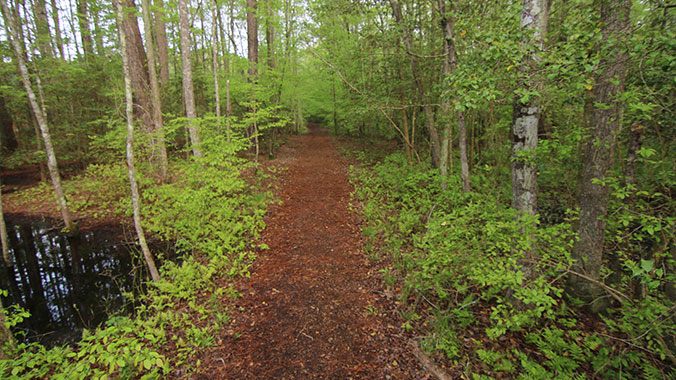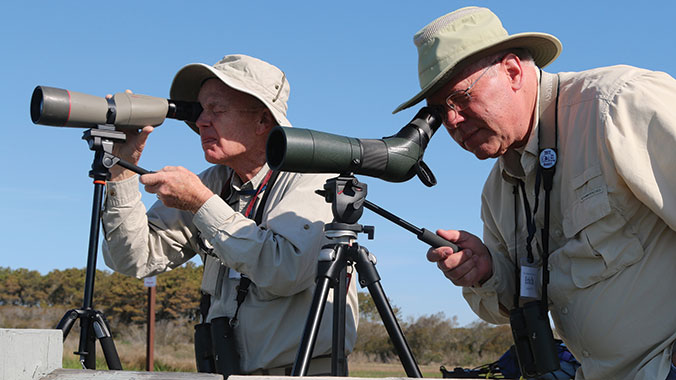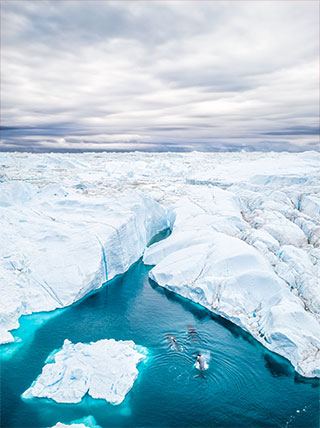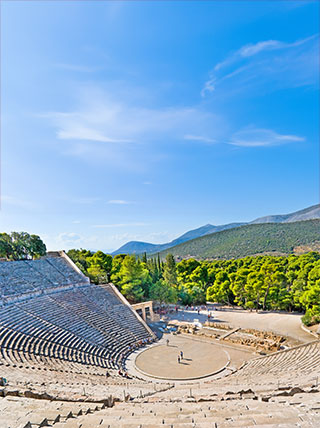Virginia
Birding Virginia’s Eastern Shore and Chincoteague Island
Program No. 201960MEADV-1116-60
Enjoy special access to Wallops Island and other protected birding destinations, where you’ll learn from experts as you look for the region’s more than 400 species of birds.
Enroll with Confidence
We want your Road Scholar learning adventure to be something to look forward to—not worry about. Learn more
Protecting the Environment
We offset a portion of the emissions created by your travel. Learn more
Prefer to enroll or inquire by phone?
800-454-5768
Select your type of room
Price will update based on selection
Prices displayed below are based on per person,doubleoccupancy.
DATES
& starting prices
PRICES
Apr 27 - May 2, 2025
Starting at
1,399DATES
& starting prices
PRICES
Apr 27 - May 2, 2025
Starting at
1,539Not seeing the date you're looking for?
To be notified if dates of this program become available, click the button below.
This date is available to book as a private experience for your group!
6 days
5 nights
14 meals
5B 4L 5D
1
Check-in, Registration, Orientation
Wallops Island
2
Boat Trip, Chincoteague NWR, Birding Skills Review
Wallops Island
3
Wallops & Chincoteague Birding, Guest Lecture
Wallops Island
5
Pocomoke River SP, Ward Museum of Wildfowl Art, Musicians
Wallops Island
6
Program Concludes
Wallops Island
At a Glance
During the migratory season, millions of birds along the Atlantic Flyway “funnel” through a small area along Virginia’s Eastern Shore, where more than 400 species have been recorded. Explore the Chincoteague National Wildlife Refuge’s restricted back country on Assateague Island with Chincoteague Bay Field Station.
Activity Level
Outdoor: No Sweat
Walking at a slow “birding” pace up to two miles on mostly flat terrain, occasional small hills, sand dunes, loose sand. Climbing vintage school bus stairs.

Small Group
Love to learn and explore in a small-group setting? These adventures offer small, personal experiences with groups of 13 to 24 participants.
Best of all, you’ll…
- Participate in a guided boat excursion into the marshes and tidal creeks to view these habitats and their inhabitants from a different angle.
- Learn identification methods using field markings, vocalizations and behavior patterns.
- Enjoy narrated walks through dunes, beaches, cypress swamps, maritime forests and more.
General Notes
The Retreat Difference: This unique, often basic and no-frills experience at a Road Scholar Retreat includes opportunities for early morning exercise, interaction with the local community for insight into local life, an authentic farm-to-table or locally sourced meal, a live performance or event, and a value-priced single room. So you can get the most out of your experience, all of our birding programs have a maximum participant-to-instructor ratio of 14:1 in the field. ATTENTION FOREIGN NATIONALS: Part of this program takes place on Wallops Island, which is a restricted access NASA base. In order to participate in the Wallops Island activities, all foreign nationals must complete additional paperwork at least 6 weeks in advance to be allowed access onto the base. Access is then subject to approval by NASA Wallops Island base. If you are a foreign national enrolled in this program, please contact the program provider directly at julie@cbfieldstation.org to request the required forms.
Suggested Reading List
(5 books)
Visit the Road Scholar Bookshop
You can find many of the books we recommend at the Road Scholar store on bookshop.org, a website that supports local bookstores.
Birding Virginia’s Eastern Shore and Chincoteague Island
Program Number: 2019
A Field Guide to the Atlantic Seashore: From the Bay of Fundy to Cape Hatteras
More than 1,000 illustrations, arranged according to visual similarities, show plant and animal species of the Atlantic Coast from the Bay of Fundy to Cape Hatteras. This guide includes information on how to locate each species by geographic range, tidal range, tidal level, season, topography, and climate.
Atlantic Shorelines: Natural History and Ecology
Atlantic Shorelines is an introduction to the natural history and ecology of shoreline communities on the East Coast of North America. Writing for a broad audience, Mark Bertness examines how distinctive communities of plants and animals are generated on rocky shores and in salt marshes, mangroves, and soft sediment beaches on Atlantic shorelines.
The book provides a comprehensive background for understanding the basic principles of intertidal ecology and the unique conditions faced by intertidal organisms. It describes the history of the Atlantic Coast, tides, and near-shore oceanographic processes that influence shoreline organisms; explains primary production in shoreline systems, intertidal food webs, and the way intertidal organisms survive; sets out the unusual reproductive challenges of living in an intertidal habitat, and the role of recruitment in shaping intertidal communities; and outlines how biological processes like competition, predation, facilitation, and ecosystem engineering generate the spatial structure of intertidal communities.
The last part of the book focuses on the ecology of the three main shoreline habitats--rocky shores, soft sediment beaches, and shorelines vegetated with salt marsh plants and mangroves--and discusses in detail conservation issues associated with each of them.
Beautiful Swimmers: Watermen, Crabs and the Chesapeake Bay
William Warner exhibits his skill as a naturalist and as a writer in this Pulitzer Prize-winning study of the pugnacious Atlantic blue crab and of its Chesapeake Bay territory. This wonderful work contains all you ever wanted to know about the life cycle of one particular kind of crab that lives in Chesapeake Bay (the kind you probably smashed with mallets if you ever went to that area). Surprisingly, for most of its life, the Atlantic blue crab has nothing to do with beer. Taking it for a focus, Warner draws connections with the sea, the rivers, the crab-friendly environment that produced such a wealth of the creatures, and then the people who live from that wealth, the islanders who lived isolated for centuries, but are now firmly within the web of modern life. Warner tells of the marketing of crabs, the catching of other Chesapeake products like oysters, and even of festivals like a Miss Crustacean contest ! You can learn about esoterica like crab pots, the Waterman's Union, the religious heritage of crabbers, and lots more.
The Sibley Field Guide to Birds of Eastern North America
Providing birders the convenience of portability, Sibley's newest volume breaks down the information in The Sibley Guide to Birds into specific regions (The Sibley Field Guide to Birds of Western North America will be published the same month). The guide includes much of the basic information in the Guide to Birds, such as the parts of a bird and general color-coded maps, but focuses most of its attention on birds who make their home east of the Rocky Mountains, such as the Double-crested Cormorant and the Eastern Screech-Owl. The color-coded maps that accompany each bird show where the birds live throughout North America, so that birders in, say, Pennsylvania, will know to look for the Northern Mockingbird in California as well. And, of course, Sibley's beautiful full-colored paintings of birds jump out at every page-even in small format.
Life and Death of the Salt Marsh
Life and Death of the Salt Marsh is a book that focuses on many aspects of the ecology of the salt marsh. To quote the authors, it is "about the marshes of the East Coast of North America: how they were formed; why they continue to exist; the interplay of plants and animals; and the effect of that influential animal, man." This book does a very thorough job of covering all these topics. It begins with the story of one particular salt marsh, how it formed, what happened to it when colonists first arrived and used it for hay production, and its eventual death after human impact became so great as to prevent marsh recovery. The remainder of the book gives detailed descriptions of the processes and organisms that affect the salt marsh. These include the geology, history of glaciation, plant and animal species, seasons, and topics relating to marsh pollution and conservation. Considering that this book was written in 1969, thirty years ago, it still seems to have good scientific accuracy. It is interesting to look at this book from a historical perspective, especially the sections on conservation. Preservation of marshes is important for many reasons. The main reason for preservation being that a large variety of species rely on salt marshes during part or all of their life cycle. Many of these species are commercially viable and are (or were when the book was written) important to the East Coast economy. The chapter on pollution control was very interesting. It includes discussion of the use of DDT. Most ecologist today have heard of or read Silent Spring and know about the dangers of DDT. Life and Death of the Salt Marsh was written just before Silent Spring, by Rachel Carson, and brings up the many dangers and harmful side effects of DDT. Obvious DDT was an area of concern for many people in fields related to ecology in the late 60's. The entire book could be related to many aspects of ecology and is thus relevant to anyone interested in the ecology of salt marshes.
Program
At a Glance
Duration
6 days
Program Begins
Wallops Island
Program Concludes
Wallops Island
Group Type
Small Group
Meals
14
| 5B |
4L |
5D |
Activity Level
During the migratory season, millions of birds along the Atlantic Flyway “funnel” through a small area along Virginia’s Eastern Shore, where more than 400 species have been recorded. Explore the Chincoteague National Wildlife Refuge’s restricted back country on Assateague Island with Chincoteague Bay Field Station.)
Best of all, you'll...
- Participate in a guided boat excursion into the marshes and tidal creeks to view these habitats and their inhabitants from a different angle.
- Learn identification methods using field markings, vocalizations and behavior patterns.
- Enjoy narrated walks through dunes, beaches, cypress swamps, maritime forests and more.
General Notes
The Retreat Difference: This unique, often basic and no-frills experience at a Road Scholar Retreat includes opportunities for early morning exercise, interaction with the local community for insight into local life, an authentic farm-to-table or locally sourced meal, a live performance or event, and a value-priced single room. So you can get the most out of your experience, all of our birding programs have a maximum participant-to-instructor ratio of 14:1 in the field. ATTENTION FOREIGN NATIONALS: Part of this program takes place on Wallops Island, which is a restricted access NASA base. In order to participate in the Wallops Island activities, all foreign nationals must complete additional paperwork at least 6 weeks in advance to be allowed access onto the base. Access is then subject to approval by NASA Wallops Island base. If you are a foreign national enrolled in this program, please contact the program provider directly at julie@cbfieldstation.org to request the required forms.
Activity Level
Outdoor: No Sweat
Walking at a slow “birding” pace up to two miles on mostly flat terrain, occasional small hills, sand dunes, loose sand. Climbing vintage school bus stairs.
Small Group
(13 to 24)
Love to learn and explore in a small-group setting? These adventures offer small, personal experiences with groups of 13 to 24 participants.
Suggested Reading List
View Full List
(5 Books)
You can also find many of the books we recommend at the Road Scholar store on bookshop.org, a website that supports local bookstores.
HAVE QUESTIONS?
Prefer to enroll or inquire by phone?
We can help. Give us a call, and we can answer all of your questions!
Call
800-454-5768
While we make every effort to ensure the accuracy of our published materials, programs are typically advertised more than a year prior to their start date. As a result, some program activities, schedules, accommodations, personnel, and other logistics occasionally change due to local conditions or circumstances. Should a major change occur, we will make every effort to alert you. For less significant changes, we will update you during orientation. Thank you for your understanding.
Duration
6 days
5 nights
What's Included
14 meals | 5B | 4L | 5D |
3 expert-led lectures
7 expert-led field trips
1 performance
An experienced Group Leader
5 nights of accommodations
Taxes and customary gratuity
Road Scholar Assurance Plan
Day
1
Check-in, Registration, Orientation
Location:
Wallops Island
Meals:
D
Stay:
Chincoteague Bay Field Station
Activity Note
Field station check-in from 3:00 p.m.
Afternoon:
Program Registration: 3:00 – 5:00 p.m. Come to the Road Scholar table in the lobby to register with the program staff and get your welcome packet containing your room assignment, up-to-date schedule that reflects any last-minute changes, other important information, and to confirm when and where the Orientation session will take place. If you arrive late, please contact the Chincoteague Bay Field Station to find out where to meet the group.
Dinner:
In the Chincoteague Bay Field Station cafeteria, the dining staff will prepare and serve our meals cafeteria style, with options ranging from a hot meal to a diverse salad bar. Coffee, tea, water, and a selection of juices and sodas are available.
Evening:
Orientation. The Group Leader will greet everyone and lead introductions. We will review the up-to-date program schedule, discuss roles and responsibilities, logistics, safety guidelines, emergency procedures, and answer questions.
Day
2
Boat Trip, Chincoteague NWR, Birding Skills Review
Location:
Wallops Island
Meals:
B,L,D
Stay:
Chincoteague Bay Field Station
Activity Note
Getting on/off buses and on/off a boat with assistance. We will be participating in a guided boat tour in the morning. In the afternoon, we will access many parts of the refuge to take advantage of birding opportunities as they arise. Please dress according to the weather. It can be quite windy on the beach.
Breakfast:
In the Chincoteague Bay Field Station cafeteria, our staff will present an array of fruits, hot and cold cereals, meats, breads/biscuits, eggs, and pancakes for your choosing. Coffee, tea, water, and a selection of soft drinks are available.
Morning:
The tidal creeks and marshes and sandy shores surrounding Chincoteague and Assateague Islands are home to some elusive wetland birds. We'll climb aboard a pontoon boat to get up close and personal with this unique habitat and look for some of its residents. Common species include Great Blue Herons, Bald Eagles, Northern Harriers, Green Herons, Little Blue Herons, Great Egrets, Clapper Rails, and more!
Lunch:
The Eastern Shore is home to some outstanding American fare and seafood restaurants. Your meal will not disappoint at one of our fine local eateries.
Afternoon:
Chincoteague National Wildlife Refuge is one of the most visited refuges in the country, but we’ll be heading into its restricted back country to have the birds all to ourselves. The shallow pools, grasslands, and woodlands are managed to provide plenty of food and resting spots for native wildlife and migratory waterfowl, so the diversity of birds will not disappoint! We’ll be on the lookout for Glossy Ibis, Caspian Tern, Merlin, Whimbrel, and an assortment of sandpipers, not to mention the famous Chincoteague wild ponies!
Dinner:
In the cafeteria.
Evening:
We will begin each evening with a review of the birds that we encountered during the day. Hundreds of species migrate through this region during spring and fall and many regularly spend the winter months here. We’ll learn and practice key skills in turning any bird seen in the field into a positive identification. Also, we’ll get a review of the many resources birders today have at their fingertips; from field guides and magazines to websites and phone apps.
Day
3
Wallops & Chincoteague Birding, Guest Lecture
Location:
Wallops Island
Meals:
B,L,D
Stay:
Chincoteague Bay Field Station
Activity Note
Getting on/off buses multiple times throughout the day; driving up to 45 minutes between stops. Walking up to a mile at stops. We will be making many stops throughout the day to take advantage of birding opportunities as we find them. Our longest drive will not be longer than 45 minutes. Our longest walk will be about a mile, but will be taken at a very slow pace as we bird. Please dress according to the weather. It can be quite windy on the beach.
Breakfast:
In the cafeteria.
Morning:
We’ll spend the morning at a variety of local Chincoteague Island and Eastern Shore mainland birding sites looking for migrating songbirds, sparrows, and birds of prey. Our target species include Summer Tanager, Indigo Bunting, Prairie Warbler, Palm Warbler, Northern Harrier, and American Oystercatcher.
Lunch:
In the cafeteria.
Afternoon:
NASA-owned and restricted access Wallops Island provides an intriguing contrast between the innovative science and technology being studied there and the relatively untouched marshes and dunes systems. Resident Peregrine Falcons are often seen on the marsh. On the beach, we frequently get up-close views of rare Piping Plovers and Red Knots, as well as an assortment of gulls and terns like the Great & Lesser Black-backed Gulls and Royal Terns. We may be the only footprints of this Atlantic beach all day, so plan to look for shells or just relax and let the birds come to you! NOTE: Our access to Wallops Island will depend on the security level of the base at the time, which is influenced by a number of factors independent of the Chincoteague Bay Field Station and its actions.
Dinner:
The Eastern Shore is home to some outstanding American fare and seafood restaurants. Your meal will not disappoint at one of our fine local eateries.
Evening:
We will listen to a stimulating presentation by a local guest lecturer.
Day
4
Local Birding Hotspots, Free Afternoon, Ornithology Lecture
Location:
Wallops Island
Meals:
B,L,D
Stay:
Chincoteague Bay Field Station
Activity Note
Getting on/off buses multiple times throughout the day; driving up to 45 minutes between stops. We will be making many stops throughout the day to take advantage of birding opportunities as we find them. Our longest walk will be about a mile, but will be taken at a very slow pace as we bird. Please dress according to the weather.
Breakfast:
In the cafeteria.
Morning:
This morning we will travel to more local birding hotspots. The locations we choose will depend on what the latest local bird sighting reports are showing. Some possible locations for today's field trip might include forested nature trails or public boat landings.
Lunch:
In the cafeteria.
Afternoon:
Free time. This block of time has been set aside for your personal independent exploration to see and do what interests you most. Please refer to the list of Free Time Opportunities. The Group Leader will be happy to offer suggestions.
Dinner:
Get ready for a seafood feast! In the cafeteria, we will sample local crabs and shrimp, or, if you choose, chicken or roasted vegetables. It’s a traditional Chesapeake boil! Beverage options include coffee, tea, water, and a variety of soft drinks.
Evening:
Tonight we will hear an enlightening evening lecture by our field station staff on Ornithology and the Eastern Shore of Virginia.
Day
5
Pocomoke River SP, Ward Museum of Wildfowl Art, Musicians
Location:
Wallops Island
Meals:
B,L,D
Stay:
Chincoteague Bay Field Station
Activity Note
Getting on/off buses. Walking up to 1.5 miles at a very slow pace at State Park; possibly wet, muddy, and uneven ground on trail. Walking and standing for about 90 minutes at art museum; seating available.
Breakfast:
Breakfast will be a tailgate breakfast served in the field. Choose from hard-boiled eggs, fresh fruit, bagels, scones, yogurt, cream cheese, etc. with beverage options of coffee, tea, and orange juice.
Morning:
Heading north into Maryland, we will visit Maryland's Coastal Bays along the Atlantic Ocean. These protected areas are the perfect place to spot wading birds, waterfowl, and migratory species as they take advantage of plentiful feeding grounds and safe rest areas. Keep an eye out for waterfowl, Avocets, Yellowlegs, Common Loons, and a variety of sparrows.
Lunch:
We will pack our lunch with us and eat upon our arrival at the Ward Museum of Wildfowl Art. Lunch options will include a variety of sandwiches, fruits, chips, and cookies. Please bring a refillable water bottle. Extra water will be available.
Afternoon:
Nestled in the heart of the Atlantic Flyway, the Ward Museum of Wildfowl Art features the world's largest and finest public collection of decorative and antique decoys. As wildfowl have been celebrated in art across continents and throughout human history, the museum collection showcases the contributions of artists who have carved birds both as tools for the hunt and as objects of artistic enjoyment. The centerpiece of the Museum is the Championship Gallery, which holds nearly 40 years of award-winning and mindbogglingly intricate artwork from the Ward World Championship, the largest bird carving competition in the world.
Dinner:
In the cafeteria.
Evening:
This evening, we will have a wonderfully entertaining performance by a locally cherished musical group. They present Celtic, nautical, and original music in a humorous and original way while providing rich historical context to music of the Eastern Shore of Virginia and beyond!
Day
6
Program Concludes
Location:
Wallops Island
Meals:
B
Activity Note
Field station check-out 9:30 a.m.
Breakfast:
In the cafeteria. This concludes our program.
Morning:
If you are returning home, safe travels. If you are staying on independently, have a wonderful time. If you are transferring to another Road Scholar program, detailed instructions are included in your Information Packet for that program. We hope you enjoy Road Scholar learning adventures and look forward to having you on rewarding programs in the future. Don’t forget to join our Facebook page and follow us on Instagram. Best wishes for all your journeys!
Please select a day to update the map
Map details are not available for this location.
MEALS
14 Meals
5 Breakfasts
4 Lunches
5 Dinners
LODGING
Lodgings may differ by date. Select a date to see the lodgings specific to that date.
Showing Lodging For:
- Nov 10, 2024 - Nov 15, 2024
- Apr 13, 2025 - Apr 18, 2025
- Apr 27, 2025 - May 02, 2025
- May 18, 2025 - May 23, 2025
- Oct 19, 2025 - Oct 24, 2025
- Oct 26, 2025 - Oct 31, 2025
- Nov 09, 2025 - Nov 14, 2025
Participant Reviews
Based on 6 Reviews
Sort By:
Wonderful program ; superb coordination by the field station staff Connor and Olivia.
Excellent birding leader Scott H - enthusiastic and very knowledgeable - over 100 species seen in just four days !
Highly recommended excursion !
— Review left November 26, 2023
There are few places in the Eastern United States as unique and beautiful as the Delmarva Peninsula. It's a great experience being outside and learning to really "see" the nature around you. Phenomenal combination of great leaders, great company, wild ponies, and amazing, amazing birds.
— Review left November 11, 2023
Excellent birding program led by an outstanding leader who was definitely skilled in identifying birds and sharing his knowledge. Would do this program in the spring.
— Review left November 10, 2023
Trip exceeded expectations!
— Review left May 26, 2023
Essential, if you want a small part in hellping to keep life on Planet Earth viable.
— Review left October 25, 2022
This is a fantastic program. The tours were so extensive and the staff Was polite and really integrated into the group. They made us all feel like family. The tour guides were so knowledgeable about the area and made sure we got to see so many birds. All the participants were so kind and exclusive. Just a lovely experience.
— Review left January 18, 2020






















